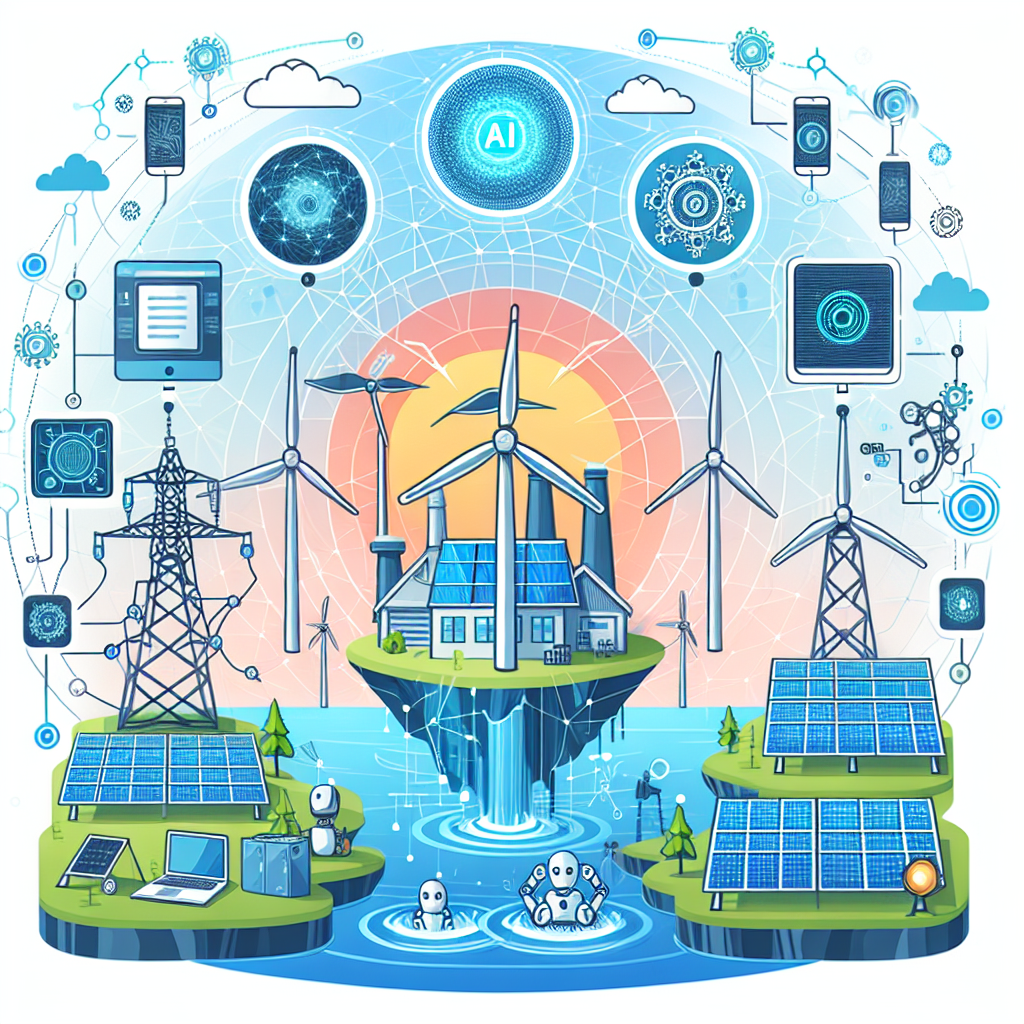Artificial Intelligence (AI) is revolutionizing the renewable energy sector by providing advanced tools for enhancing forecasting accuracy. As the demand for renewable energy sources continues to grow, the need for accurate forecasting becomes increasingly important to ensure efficient integration into the grid. AI-powered tools are proving to be essential in improving the accuracy of renewable energy forecasts, enabling better planning and optimization of resources.
AI tools utilize advanced algorithms to analyze vast amounts of data from various sources such as weather patterns, historical energy production data, and grid infrastructure. By processing this data in real-time, AI tools can provide more accurate and reliable forecasts of renewable energy production. This can help energy operators and grid managers optimize their operations, reduce costs, and improve overall efficiency.
One of the key advantages of AI tools for renewable energy forecasting is their ability to adapt to changing conditions and variables. Traditional forecasting methods often rely on historical data and simplistic models, which may not capture the complex interactions and uncertainties of renewable energy generation. AI tools, on the other hand, can learn from new data and adjust their models in real-time, improving the accuracy of forecasts even in dynamic and unpredictable conditions.
Another benefit of AI tools is their ability to integrate multiple data sources and variables to provide a more holistic view of renewable energy production. By combining data from weather forecasts, satellite imagery, sensor data, and historical production data, AI tools can generate more accurate and reliable forecasts that take into account a wide range of factors affecting energy generation. This can help energy operators better predict and plan for fluctuations in renewable energy production, enabling them to optimize their resources and make more informed decisions.
AI tools for renewable energy forecasting are also helping to address some of the challenges associated with integrating renewable energy sources into the grid. One of the main challenges of renewable energy integration is the variability and intermittency of renewable energy generation, which can create instability in the grid and lead to inefficiencies in energy production. AI tools can help mitigate these challenges by providing more accurate forecasts of renewable energy production, allowing grid operators to better anticipate and manage fluctuations in energy generation.
In addition to improving forecasting accuracy, AI tools can also help optimize the operation of renewable energy assets. By analyzing real-time data and identifying patterns and trends, AI tools can help energy operators optimize the performance of renewable energy assets, maximize energy production, and minimize downtime. This can lead to increased efficiency, reduced costs, and improved overall performance of renewable energy systems.
Overall, AI tools are proving to be invaluable in enhancing renewable energy forecasting and improving the integration of renewable energy sources into the grid. By providing more accurate and reliable forecasts, optimizing the operation of renewable energy assets, and addressing challenges associated with renewable energy integration, AI tools are helping to accelerate the transition to a more sustainable and renewable energy future.
FAQs
Q: What are some of the key benefits of using AI tools for renewable energy forecasting?
A: Some of the key benefits of using AI tools for renewable energy forecasting include improved accuracy and reliability of forecasts, better integration of renewable energy sources into the grid, optimization of energy assets, and cost savings.
Q: How do AI tools improve the accuracy of renewable energy forecasts?
A: AI tools use advanced algorithms to analyze vast amounts of data from various sources, such as weather patterns, historical energy production data, and grid infrastructure. By processing this data in real-time, AI tools can provide more accurate and reliable forecasts of renewable energy production.
Q: How do AI tools help address the challenges of integrating renewable energy sources into the grid?
A: AI tools can help address the challenges of integrating renewable energy sources into the grid by providing more accurate forecasts of renewable energy production, enabling grid operators to better anticipate and manage fluctuations in energy generation, and optimizing the operation of renewable energy assets.
Q: What are some examples of AI tools for enhancing renewable energy forecasting?
A: Some examples of AI tools for enhancing renewable energy forecasting include machine learning algorithms, neural networks, and predictive analytics platforms. These tools can analyze vast amounts of data to provide more accurate and reliable forecasts of renewable energy production.
Q: How can energy operators and grid managers benefit from using AI tools for renewable energy forecasting?
A: Energy operators and grid managers can benefit from using AI tools for renewable energy forecasting by improving the accuracy and reliability of forecasts, optimizing the operation of renewable energy assets, reducing costs, and improving overall efficiency.

